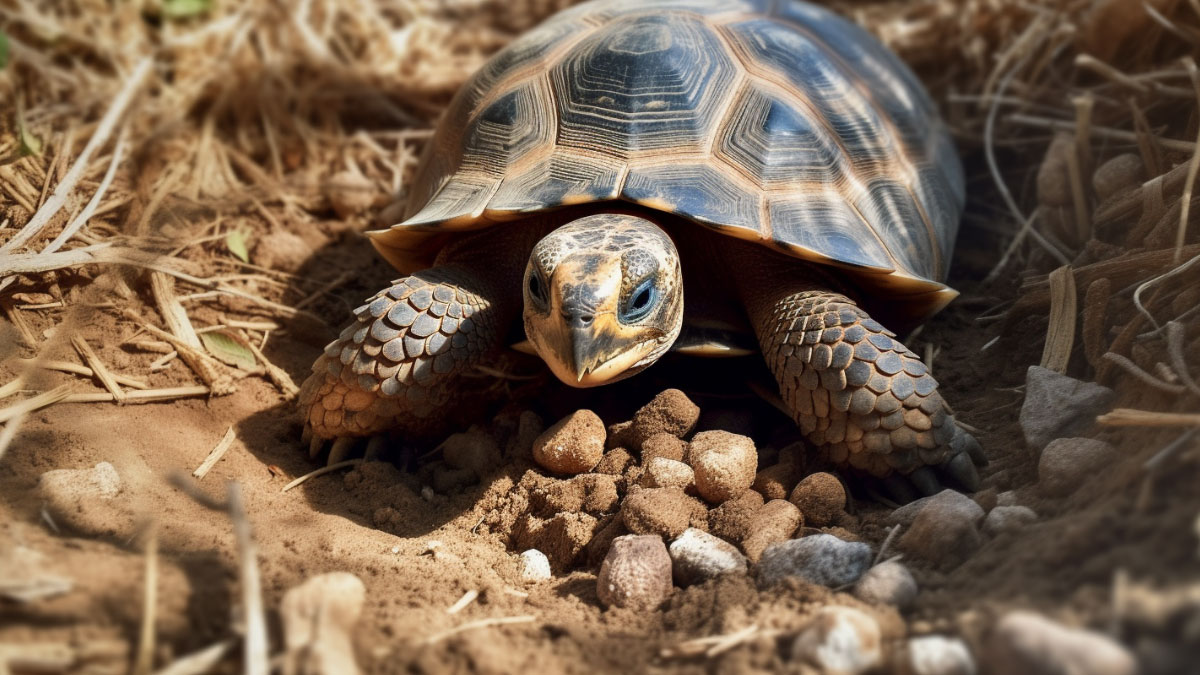Tortoise Eggs 101: How Many, Where, and When They Lay?
The reproductive system plays a crucial role in the life cycle of tortoises. The valuable tortoise eggs are the foundation of this procedure. Come to the question about tortoise eggs: how many, where, and when do they lay?
The number of eggs can be like a few eggs or as many as 100, depending on their type. They usually lay eggs in the sand as it is a comfortable place for nurturing purposes. Tortoises normally lay their eggs in the warm season as it is a more suitable time for nurturing eggs.
If you want to know more about tortoise eggs, then you need to go deeper. I’ll go through it with you in detail to make the most of your time. So, keep reading to learn more about the egg-laying facts of tortoises.
Tortoise Eggs 101: How Many Eggs Do They Lay at a Time?
Contents
For the purpose of reproduction, female tortoises lay eggs. Depending on the tortoise species, there might be differences in the number of eggs.
Different kinds of tortoises differ significantly in terms of how many eggs they lay each year. Every species has a distinct reproductive strategy, and every generation will have a varied number of eggs.
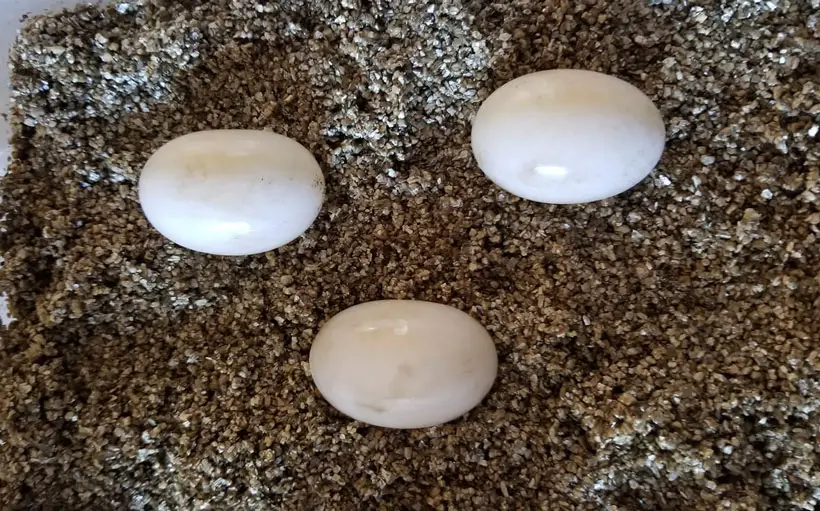
In comparison to lesser species, bigger species of tortoise, like the Galapagos tortoise (Chelonoidis niger), often lay more eggs. Approximately 12 to 16 eggs can be found in a single nest of a Galapagos tortoise. This is probably because bigger tortoises have higher reserves of energy that are used for egg production.
However, smaller tortoise species could produce fewer eggs in each batch. For instance, the smaller species of Russian tortoises (Testudo horsfieldii) normally lay 2 to 4 eggs in each batch. The decreased number of eggs is probably a result of the mother tortoise’s size and energy limits.
It’s crucial to remember that these figures are only approximations and that they might differ even amongst species. The number of eggs laid can also be affected by variables, including the tortoise’s health, age, and surroundings.
Because of this, it’s always useful to follow specific information on the specific kind of tortoise.
Tortoise Eggs 101: Where Do They Lay Eggs?
Normally, tortoises select nesting locations that offer ideal circumstances for the incubation of eggs and maximize the likelihood of a successful hatch.
In a breeding space that is given by their keepers, tortoises in captivity usually release their eggs. To simulate the natural surroundings that tortoises would seek in the wild, it is imperative to construct a habitat that is optimal for egg-laying.
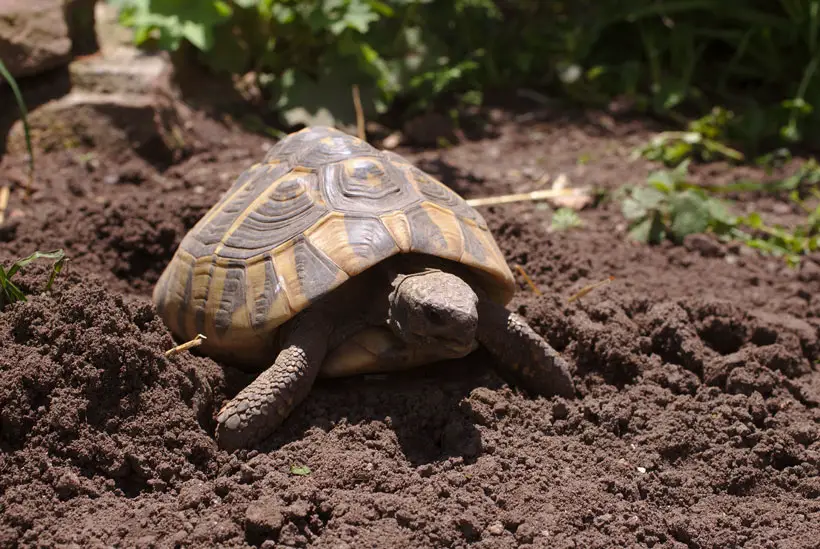
They take into account a number of important aspects, including the makeup of the soil and structure. For numerous reasons, tortoises prefer sandy or loamy soil.
The necessity of sandy or loamy ground is shown in the following description of tortoise breeding locations:
- Mobility: Sandy soil has strong permeability, which means it makes it simple for water to drain. This is essential to keeping the eggs from getting soggy and perhaps spoiling.
- Managing Temperature: Sandy soil has great thermal qualities. It helps to control the temperature inside the nesting location by absorbing and holding onto solar heat.
- Easy Digging: Tortoises are skilled diggers who employ strong limbs and razor-sharp claws to enlarge nest holes. It is simpler for tortoises to create their nests on sandy soil because of its comparatively loose and supple structure.
Nesting Preference
Although sandy soil is often desired, various tortoise species may have distinct nesting preferences. In addition to their natural habitat, certain species may also use alternate materials like leaf litter or forest dirt.
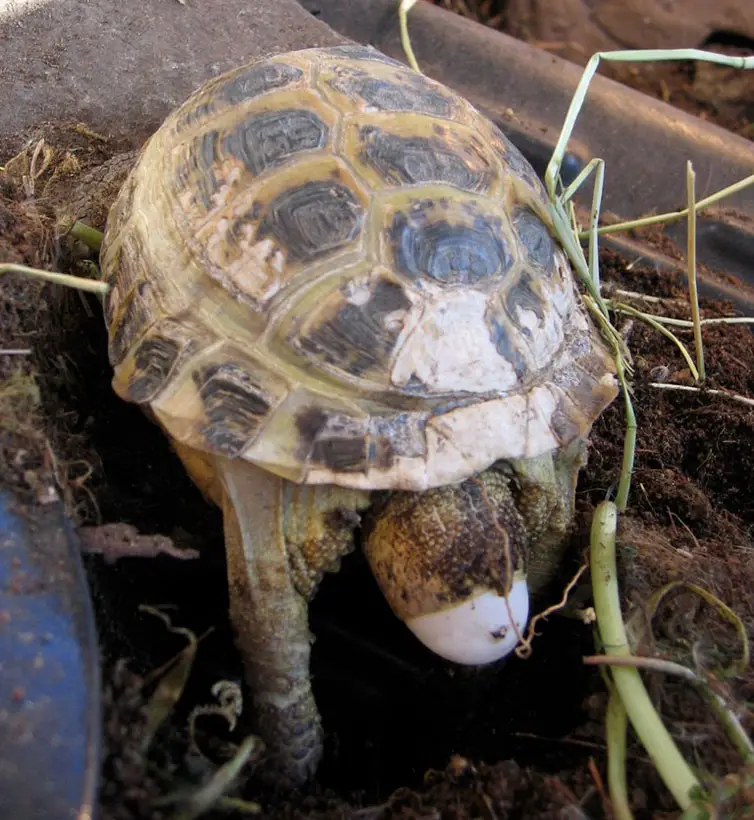
Tortoises have a range of nesting likes, including both open spaces and hidden locations. These decisions are influenced by elements, including the tortoise’s species, environment, and unique environmental adaptations. Following is a description of the many nesting decisions that tortoises make:
- Open places: Some tortoise species prefer to build their nests away from thick foliage or other obstacles in open places. For animals that live in more dry or semi-arid settings, this decision is frequently noted. Tortoises can benefit from the abundant sunshine by choosing open places since it warms the nesting site and makes incubation easier.
Furthermore, nesting in wide spaces exposes birds to fewer predators, enabling the females to keep a close eye on their homes and protect them if required.
- Closed places: Many tortoises prefer to build their nests in secret locations that provide cover and camouflage. These secluded areas may be found among the shrubbery, thickets of foliage, or rocky outcrops.
By choosing these locations, tortoises get more refuge and are less visible to possible predators. Additionally, hidden nesting locations offer superior insulation, preserving a steady microclimate and shielding the eggs from varying temperatures and outside influences.
It’s crucial to understand that different tortoises from the same species may have varying levels of affinity for particular nesting locations. Furthermore, competition, habitat, and previous nesting experiences might influence their decisions.
Tortoise Eggs 101: What Is The Tortoises’ Egg Laying Season?
There are particular times of year or seasons when tortoises tend to lay their eggs. However, the exact date of the nesting season might vary depending on the type of tortoise.
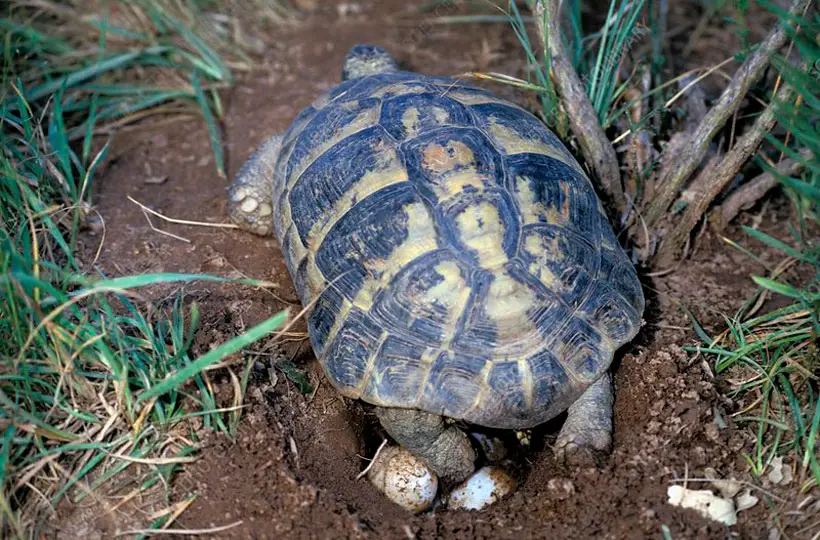
The material that follows offers a basic summary, but it’s vital to remember that there are specific distinctions. With a focus on species-specific variations, the following list of seasons in which tortoises typically lay their eggs is provided:
- Spring: Spring and the early summer months are when many tortoise species lay their eggs. The abundance of food supplies and rising temperatures are two characteristics of this time period.
Tortoises, like the Mediterranean tortoise (Testudo graeca), can lay their eggs at any time between April and June. It takes advantage of the ideal circumstances for nesting and hatching during the warmer months.
- Summer: Most tortoise species continue to lay eggs far into the summer. Depending on the habitat and location of the species, egg-laying may occur from June through August or even later.
Examples are the African spotted tortoise (Centrochelys sulcata), which normally lays its eggs in the summer, and the desert tortoise, which may do so in the early summer.
- Rainy Season (July-August): In areas with clearly defined wet and dry seasons, several species of tortoise time the start of their nesting activities. In order to coincide with the arrival of the rainy season.
Greater moisture availability aids in soil softening and encourages plant development, which creates favorable circumstances for nesting. In tropical places, tortoises such as the red-footed tortoise (Chelonoidis carbonaria) may lay their eggs throughout the rainy season when food supplies are plentiful.
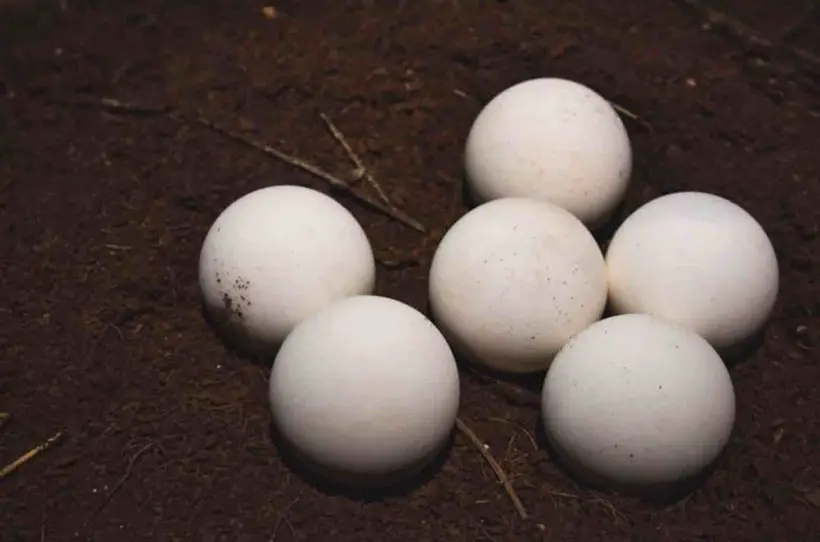
It’s critical to stress that these typical months might vary depending on locale and species. Various tortoise species have evolved unique nesting practices as a result of their adaptation to various settings.
The start and end dates of the breeding period can vary significantly depending on a number of variables, including regional environment, geographical position, and the particular biological needs of each species.
FAQs
These are some frequently asked questions by people about tortoise egg-laying habits.
A tortoise lays eggs only for one time a year. So, do not expect more from your tortoise if it has already laid eggs in the same year.
The pregnancy period of a tortoise can be between 30 days to 3 years. It also include mating. The female may construct a number of test nests before laying an average of 5 to 10 oval or round eggs.
A tortoise may take 15 to 20 years to reach sexual maturity in the wild and become able to lay viable eggs. Some tortoises reach sexual maturity at around 4 or 5 years of age when they are in captivity.
Conclusion
There are various species of tortoise and they all don’t lay eggs in the same number or on the same spot. Eggs are often laid by tortoises in specified nesting locations with good substrate and seclusion. Although the time of egg-laying varies, it frequently coincides with the rainy season or follows periods of precipitation.
Successful egg incubation requires an understanding of the particular requirements and habits of the tortoise species. Owners of tortoises may assist the health and development of the eggs by providing the right environment and care, increasing the likelihood of a successful hatch, and the development of healthy hatchlings.

